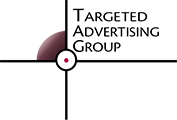Image Content Digital Sizes and Formats Primer

“Advertising”is the most frightening keyword in small business marketing. Combine it with another scary keyword, “digital”, and majority of small marketers either think “out of my league” or just run for the hills. That’s unfortunate because Online Advertising offers small business an unexpected opportunity to see business growth from a low-cost and low-toil marketing effort. Not every business is ready to embrace the level of success possible through online advertising. Is yours?
Small marketers know the demanding requirements of social media and search – relentless content generation and a negligible payoff. Online advertising by contrast respects the marketer’s time requiring an upfront skilled effort but once established. Online media campaigns require little tending until performance review time. That review can be as frequent as daily if so inclined. But that’s an expert’s job.
Periodic reviews of campaign results bring refinements to both media and message, always with the goal of improving outcomes. For small marketers, the overwhelming benefit of online advertising is less work, more real business results. That’s just dollars and sense.
Embracing Online Advertising
Online Advertising requires 3 essential elements – Media, Creative and a Website that’s ready to welcome your Customers.
Internet Media is handled by high speed computers that efficiently direct ad messages to best prospects whichguarantee more site visits, a number of potential new customers and measurable outcomes.
With internet media now in the realm of affordable alternatives and with a site ready for company, the smaller marketer’s attention must turn to message. We examine the creative options out there to exploit not only the online advertising opportunity but to take advantage of all the ways were creative is needed on the web such as social media and blogs. We concentrate on creative for advertising online here.
TEXT ADS
One visit to Google and you’ll see the dominant type of online ad, the Text Ad. These 4 lines of advertising come-on are surprisingly effective. People click on text ads and get taken to a website that’s primed and goal oriented for business whether that is making a sale, getting a lead or making a first impression to a potential new client.
Marketers always question whether online advertising can be effective for their “kind” of business. The answer is a big YES. Online targeting methods will find your customer wherever they are online whether by geography, interests, browsing preferences, and of course, demography. You’ve just got to make it creative enough to get that click.
The other way to deliver an online message allows the marketer to visually showcase products and personality using display image ads.
IMAGE ADS
A picture is worth a thousand words. Never more true than online. The internet is filled with images. There are whole websites like Pinterest devoted to nothing but images. Yet most small marketers have no custom creative art and don’t fully take advantage of the power of pictures online whether used in advertising or elsewhere.
Online ad formats are video, rich media, display ads. While text ads sell with words, and display ads sell with pictures, Rich Media ads offer creative ways to involve an audience with an ad. These ads can expand, float, peel down, etc. Static display ads offer more limited interactivity but are by far the most popular ad format.
The size and formats allowed for digital advertising is governed by the Interactive Advertising Bureau (IAB). Standardization helps advertisers and online publishers conform to predetermined ad dimensions like the popular inline ad space, the 300×250 pixel or Medium Rectangle. Inline rectangles comprise over 25% of all ad formats. Overtime, some sizes have become standards.
How Much Creative and How Good?
Display image ads entice with sight, motion and even sound. People aren’t crazy about commercials online so static ads are the way to go. But static ads really demand good creative design. Without motion and sound, you’ve got to stand out based on visuals and text alone. You need good, strong creative and it needs to change frequently, means you need to have a set of 5 to 20 visual ads.
People’s attention spans are minute. They don’t call web traffic ‘surfers’ and ‘browsers’ for nothing. Multiple ads prevent message boredom. Google recommends that advertisers have 3-4 image display ads for a campaign and allow up to 20. Having so many ads allow the advertiser to approach a sales message from slightly different angles, deepening and dimensionalizing the ad message and directing customers to different URL pages within a website.
Google rates the quality of display ads and factors that into site rank on search results. Google’s Quality Score is a measure of how relevant a display ad and its destination URL are to the search. Better ads get charged less and get better positioning on the page.
Some of the more universal ad units in use are previewed below but may not appear in actual pixel sizes.
Horizontals
Another common digital ad is the 728×90 pixel horizontal banner (also known as a Leaderboard) visible at the top, middle or bottom of a web page. It’s always best to be higher up on a web page. Above the fold as it is called in print media. The web space is considered more valuable than the space that requires the action of scrolling down.
Like an outdoor billboard message, the digital horizontal ad message has to be very concise. The banner ad format (468×60 pixels) is almost half the size of its big brother, the leaderboard, and gets about half the impressions. Horizontals are best when static or animated and in either of those formats they make a big impact. Mobile leaderboard ads like those for a smartphone are 320×50 pixels in size. Tiny space but proven to carry a message effectively.
Verticals
The tall vertical is useful when you want to double your message presence visually.
It is available as a Half-Page unit (300×600 pixels) as well as the narrower, Wide-Skyscraper ad unit (160×600 pixels) is one of the four ad units grouped as a set in IAB’s Universal Ad Package.
Verticals’ longer length ensures the ad message remains in sight as a reader scrolls down the web page when reading more editorial content or scrolling a bit longer.
Selecting the right ad size has to do with the creative and business need as much as it has to do with options for placement.
Different size ads allow the marketer more creative license. The smaller overall canvas for digital ads means the marketer is almost forced to streamline and focus a selling message in deference to both the medium space limitations in advertising but also the minimal attention span possible from active web surfers.
Panoramics
Often there is a need for a large space digital ad unit online. They are known as panoramic display ads because they dominate a web page visually. Panoramics establish a brand presence like no other image size and are the key creative required for social media pages on Facebook, Twitter and Google+. IAB’s panoramic pixel unit is 970×250 pixels in size.
Fifty-five percent of small businesses maintain a Facebook page but few of them have proper creative for their cover page! Whether used as a social media cover page or as a dominating ad unit displayed on a website, panoramic display ads impress.
BEST PRACTICE:
Every business with an online presence even if just a brochure site should have an inventory of digital creative ready for unexpected sales opportunities and routine branding.
BONUS: Image ads can improve site rank on search engines and make great content for social media updates and blog posts.
TAG on the Web is a web marketing and design firm providing digital marketing solutions to small business. TAG’s has affordable fixed priced media packages for every budget and on-demand 7 Day delivery of creative. https://tagontheweb.com
Original Article Source: http://EzineArticles.com
